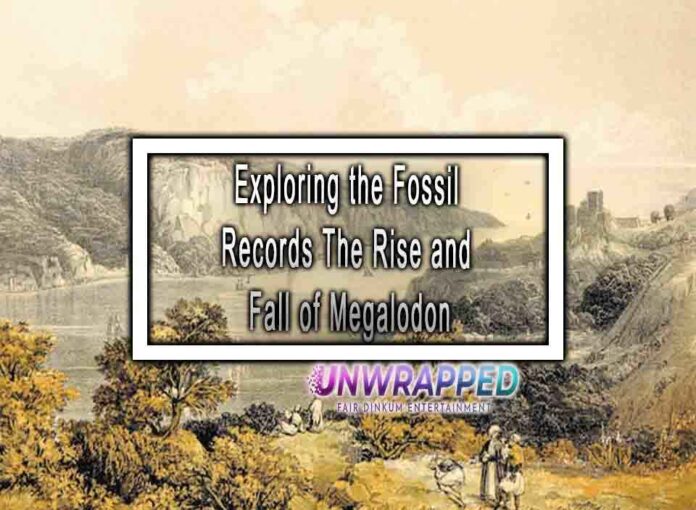The rise and fall of Megalodon, the prehistoric giant shark, is a captivating story told through the fossil records. Here’s an exploration of the key aspects of Megalodon’s existence:
1. Introduction to Megalodon:
- Size and Power: Megalodon, meaning “big tooth,” was one of the largest predators to ever roam the seas. It existed approximately 23 to 3.6 million years ago during the Miocene and Pliocene epochs.

- Estimated Size: While estimates vary, Megalodon is believed to have reached lengths of up to 82 feet (25 meters) or more.
2. Fossilized Teeth:
- Abundant Fossils: Megalodon’s most enduring legacy in the fossil record is its teeth. Fossilized teeth are relatively common and have been found in various parts of the world.
- Characteristics: Megalodon teeth are large, triangular, and serrated, designed for cutting through the flesh of large marine mammals.
3. Paleogeography and Distribution:
- Global Presence: Fossil evidence suggests that Megalodon inhabited oceans worldwide, with fossils discovered in regions ranging from North and South America to Europe, Africa, and Asia.
- Paleogeography Changes: Changes in sea levels and oceanic conditions during the Miocene and Pliocene epochs likely influenced Megalodon’s distribution.
4. Paleoecology and Diet:
- Apex Predator: Megalodon was undoubtedly an apex predator, preying on a variety of marine mammals, including whales, seals, and other large sea creatures.
- Adaptations for Hunting: Its powerful jaws and serrated teeth were adaptations for hunting and feeding on large, marine vertebrates.
5. Extinction and Theories:
- Timeline: Megalodon’s extinction is estimated to have occurred around 3.6 million years ago.
- Theories: The exact cause of Megalodon’s extinction remains uncertain. Various theories include changes in oceanic conditions, competition with other predators, or a decline in the availability of its preferred prey.
6. Fossilized Vertebral Centra:
- Additional Remains: While teeth are the most common Megalodon fossils, other skeletal remains, such as fossilized vertebral centra (vertebrae), have also been discovered.
- Understanding Anatomy: These additional fossils contribute to our understanding of Megalodon’s anatomy and biology.
7. Size Estimates and Growth Patterns:
- Teeth Size Correlation: Megalodon tooth size is often used to estimate the size of the shark, although the correlation between tooth size and body length may not be straightforward.
- Growth Patterns: Studies of growth patterns in Megalodon teeth provide insights into the species’ life history and development.
8. Scientific Challenges and Controversies:
- Lack of Complete Skeletons: The absence of complete Megalodon skeletons presents challenges for scientists in reconstructing its full anatomy and understanding aspects of its biology.
- Controversies: Some debates exist within the scientific community regarding Megalodon’s behavior, physiology, and extinction dynamics.
9. Popularity in Popular Culture:
- Cultural Impact: Megalodon’s colossal size and predatory nature have made it a popular subject in books, documentaries, and movies.
- Scientific Accuracy: While popular depictions often emphasize Megalodon as a formidable giant, scientists strive to balance public fascination with scientific accuracy.
Megalodon’s story is a captivating chapter in the history of Earth’s oceans, preserved in the fossil record. While many mysteries still surround this giant shark, ongoing scientific exploration and new discoveries continue to shed light on the life and times of Megalodon and its eventual disappearance from the world’s seas.











